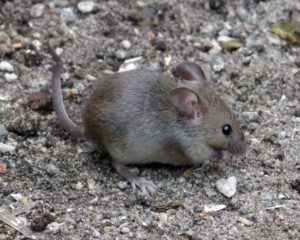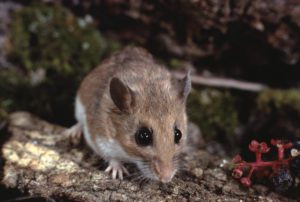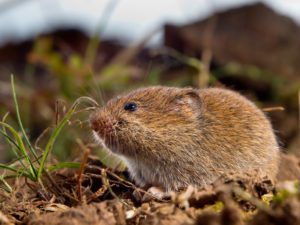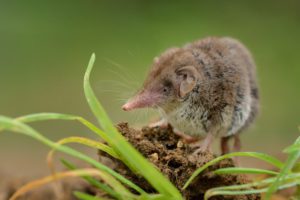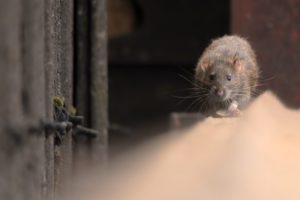51% of homeowners in Midwest have had an experience with rodents in their homes. More than HALF! So, if YOU have never encountered a mouse or rat in or around your house, then your neighbor has. And that’s right next door. But are mice really that bad? Keep reading to find out.
Are Mice Really That Bad?
You might see one in the garage and be like “meh…it’s just one.” Well guess what. Where there’s one, there are six to twelve more mice within 20 feet of you. Not trying to freak anyone out, but these are the facts. Mice are very social creatures. Comfort and survival in numbers is their philosophy. And the average litter of mice is 12 pups. Females can continuously give birth. The math is scary.
So are mice really that bad to have around you though?
We hear this all the time, so you’re not alone if you’re asking this question! Rodents, such as rats and mice, are known to spread many diseases. Some of these diseases can spread from rodents to people through direct contact and exposure to large populations. Mice and rats spread bacteria, parasites like mites and ticks, and a bunch of different viruses through their feces and urine. They can’t hold their bladders, so when they walk or run, they’re constantly leaving a scent trail. This signals to other rodents that there’s a path to potential food and nesting spots nearby.
Here are two examples of diseases (the two most common ones) that are transmitted by mice:
Hantatvirus are a group of viruses that can be carried in some rodents. Any woman, man, or child who is around mice or rats that carry hantaviruses can get Hantavirus Pulmonary Syndrome (HPS). The virus is mainly transmitted to people through exposure to droppings, fresh rodent urine, or nesting materials.
Lymphocytic choriomeningitis (LCM) is a rodent-borne viral infectious disease caused by lymphocytic choriomeningitis virus. Common house mice are primary hosts and this can be transmitted via exposure to fresh urine, droppings, saliva, or nesting materials from infected rodents.
We want you to be healthy!
If you have a rodent situation going on in your home or business, please contact us so we can help identify how they’re getting in and solve the problem at the root with you! We have an affordable program that will help keep your home healthy all year long. Not just with rodents, but it also covers dozens of common household insect pests as well.
Common types of rodents
We wanted to give you some info about the most common rodents we see here in our area. More info and images are in our Pest Library if you care to dive deeper. Our experts are also just a chat message or call or email away. And they’re real people who work for our local family business who understand what you’re going through.
House Mouse
House mice are small and slender, with large ears, small eyes, and a pointed nose. Although house mice live outside in nature and are a main source of food for birds of prey, due to their small bodies being able to fit through spaces the size of a dime, they often make their way indoors. Mice are curious by nature. Using light, odor and air flow detection, they’re searching for food and cozy nooks to nest.
They’ll sneak under your overhead garage door. Mice will crawl through gaps in window wells and basement windows. They so easily squeeze into the gaps around utility pipes and wires, too. Mice store shredded insulation, paper, tissue for nesting materials. Bird seed, dog food, 7 years of crumbs underneath your stove…all of these will attract mice if not properly stored and cleaned.
Deer Mouse
Deer mice prefer outdoor habitats like leaf piles, logs, and bushes for example. Owls prey on deer mice. If you’ve ever had to dissect an owl pellet in grade school (or like doing it for fun) you’d see the bones of deer mice for sure. Deer mice are more round in body shape. They’re brown with white bellies and feet. This species is more likely to be found in sheds, barns, and more wooded or rural settings in general.
Vole
Voles, also known as meadow mice or field mice, are chubby furry rodents with small eyes and rounded ears that are hidden. Their appearance can either be grey or brown and they have rounded stocky bodies with small legs and a short tail. Voles are very territorial, and are capable of harming crops, residential and rural landscapes. These tend to create track marks in the lawn, which is one of the ways our experts can differentiate this species verses moles and other rodents. Voles constantly forage. These and mice are hazardous to utility wires and are notorious for chewing through them, especially in garages, because they’re constantly chewing.
Shrew
With their small eyes and pointed noses, shrews are small and slender in size. Like voles, these rodents are very territorial. They live in mostly rural or wooded areas naturally. Shrews can live underground or even underneath snow in the winter. They might be teeny tiny, but their appetites are VORACIOUS. Shrews eat constantly. They chew constantly. Gotta keep those teeth ground down or they’ll grow too large for their skulls!
Norway Rat
As the largest and most common dwelling rat in the world, the Norway rat lives anywhere from urban areas, to wooded areas and farms. These rats can be gray, brown, or black and appear to have small eyes and ears with tails just as long as their bodies. This kind of rat thrives because of human error.
What does that mean? This type of rat takes full advantage where we fall short on sanitation, structural soundness, and prevention practices. Rats are more common in urban settings because there are more people concentrated in big cities. More dumpsters behind restaurants, alleyways, dog feces on public rights of way, sewers, underground railways… Similarly in agricultural settings like horse barns, grain mills and storage buildings, rats will take advantage of animal feces, improperly stored feed and grains like corn or oats.
In order to prevent a rat invasion, you HAVE to think preventatively. Seal up gaps the size of a quarter or larger. Practice good sanitation and trash disposal. Clean up after your dog when it does its business. These are all good practices. But, don’t forget. We’re here to help.
We want people to live in healthy homes and environments. We’re here to help you through any pest problem. Contact us link to discuss your situation.


